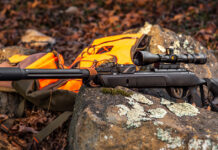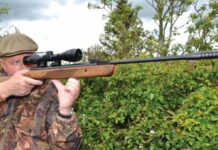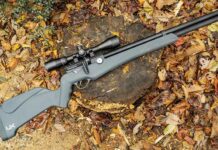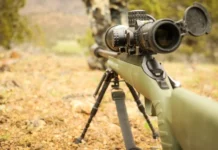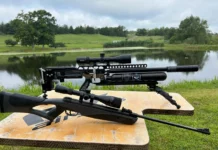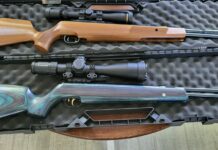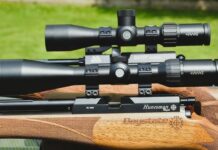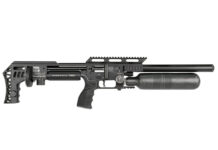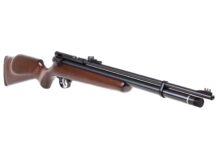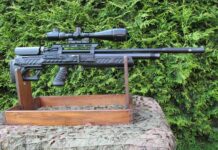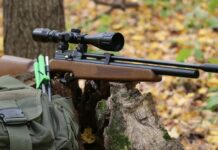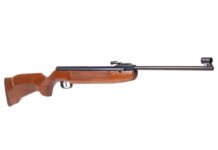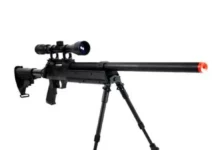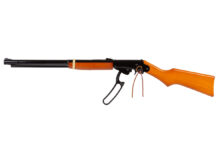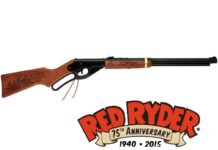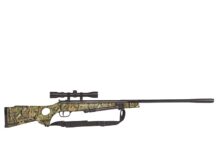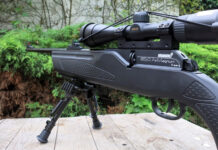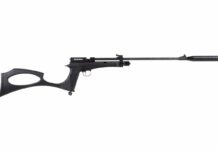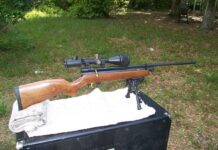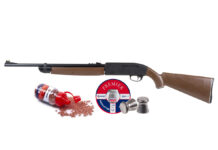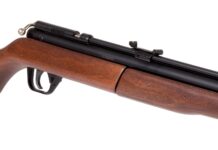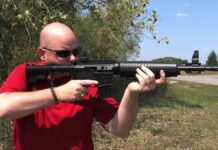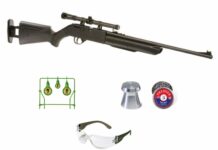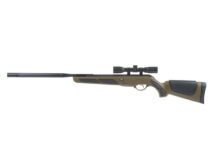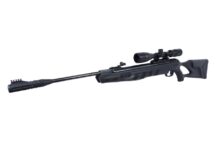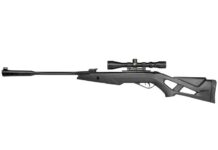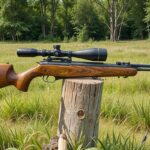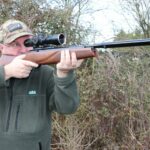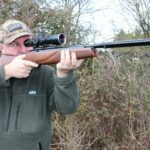By Duncan Dobie
Taking a world-record buck is hard under any circumstances. Doing so with a 45-pound recurve and wooden arrows is even more remarkable.
Such was the situation in 1962, when then-34-year-old Lloyd Goad shot his 14-pointer in southern Iowa. At the time, the deer was the top bow typical of the modern era, at 197 6/8 net Pope & Young points, and he’d wear the crown for three years.
Lloyd died on Dec. 20, 1993, and remarkably little has been written about his great whitetail. The following was taken from his handwritten account of the historic hunt.
“I started hunting squirrels with a neighbor when I was about 14 years old,” Lloyd wrote. “Kenny was several years older than me. All of his close hunting buddies had been called off to service during World War II, but he was unable to go because of a heart condition. He was one of the finest hunters I ever knew.”
After getting married, Lloyd found a new hunting partner in his wife’s brother, Donald. They enjoyed many trips to hunt small game near the Des Moines River, in an area that later became part of Red Rock Lake.
Around 1953, the Conservation Commission opened a special deer season with a limited number of permits for a two-day shotgun hunt. It was a new experience for both men.
“Gradually our enthusiasm for deer hunting in Iowa spread,” Lloyd wrote. “We didn’t fill our tags each year, but for about six or seven years we had some very rewarding hunts.
“During the late ’50s, more and more shotgun hunters began to invade our territory,” he noted. “About that time, several of the original bowhunters in our area brought in the biggest bucks I’d ever seen! I decided the challenge of bowhunting for deer was something I wanted to try.
“Midway through the 50-day 1961 bowhunting season, I purchased some hunting equipment from the closest archery dealer around, a man named Elwood Stafford, who lived in Albia, Iowa,” Lloyd noted. “I bought myself a 45-pound York Crescent recurve bow and some cedar shafts tipped with Hill’s Hornet broadheads.
“Being a veteran bowhunter himself, Elwood was very helpful in showing me some of the fundamentals of bowhunting,” Lloyd noted. “I knew I should do a lot of practicing, so I acquired several bales of straw from a farmer. I placed them against the lube room wall of the service station (which Lloyd ran), along with several layers of cardboard.
“The longest distance I could get from the target without running the risk of having someone walk in front of an arrow was about 40 feet. Studying this distance from a gun hunter’s perspective, I said to myself, ‘This’ll be a cinch!’ But the many scars on the cement block wall were grim reminders of the misses and broken arrows that resulted from my first few practice sessions. After several days, though, I began to get the feel of a decent release, and I started shooting some reasonable groupings.”
With less than two weeks left in the 1961 season, Lloyd headed for the Monroe County woods. Hunting on the ground, he got a shot at a button buck — but the arrow sailed about four inches over the deer’s shoulder. Days later, Lloyd missed a forkhorn walking broadside at about 20 yards. That arrow deflected off a tree limb.
Although disappointed, Lloyd was now hooked on bowhunting. “Those two misses gave me more of a thrill than practically all of my shotgun kills,” he wrote.
Lloyd then had two more misses during the early weeks of the 1962 season. Little could he know that his next shot — only his fifth at a wild deer — would bring down one of the greatest typicals of all time.
“When the last day of the ’62 archery season appeared on the calendar wall at the service station — Dec. 2, 1962 — I was still without a deer,” Lloyd wrote. “I resolved to take the entire day off and hunt all day long, if necessary.
“The day began pretty much like any other — up early, a good-luck wish from my wife, Loretta, and I started on the 18-mile ride to my stand with the windows and vents open on my pickup to help rid my clothes of all household odors. Before heading into the woods, I applied a liberal dose of buck lure on the sleeves and legs of my camouflage suit and a little extra on my cap for good measure.
“To a large degree, the good fortune I was about to experience was due largely to several outings I had shared with a good friend named Paul Pearson,” Lloyd wrote. “Paul had been one of the best wolf hunters in southern Iowa during his younger years, and he taught me a lot about reading the woods and looking for deer sign — especially about trails and crossings. Since most bowhunters hunted on the ground in those days, my preferred method was to set up near a major trail not far from a little-used road crossing. You could get there quickly and quietly without spreading a lot of scent in the woods, and I found that deer liked to use these trails.
“When I reached the area I intended to hunt, I met a hunting buddy, Bob DeMoss, who planned to do some squirrel hunting in the same general area. I also ran into two other bowhunters. One had shot a doe the evening before, and he was back to look for it. He planned to continue his search in an area just north of where I wanted to hunt. His friend said he would cover a trail to the west, in case something was chased out.
“Bob decided to hunt squirrels in the timber on some state forest land just south of me across a dirt road. So I decided to hunt a well-used trail not far from the road — pretty much in the middle of all this activity — in hopes that something might happen.”
Lloyd quietly slipped into a small, triangular patch of woods near the right-angle intersection of two dirt roads. He took a stand next to a large elm not far from a fencerow that ran from one road to the other.
Hunting conditions were perfect. The area was cloaked in a heavy mist, the kind big bucks love to sneak around in. Lloyd barely had time to pick his spot before he heard a noise coming from toward the road.
“I took a peak around the elm, and there he came — slipping through the wild plum sprouts and sumac bushes with his h
ead down. He had so many points on his head that I couldn’t distinguish his antlers from the limbs of the bushes. My heart started pounding so hard I thought he must be deaf not to hear it,” Lloyd recalled.
“He walked up to the fence and stopped behind some brush not 20 feet away. I was behind the tree, and he couldn’t see me trembling. I could have taken a shot through a small opening in the brush at that time, but the experience of four previous misses had taught me that it was simply too risky. I waited.
“He just sort of melted over the fence with no effort. My bow was already in position, and all I had to do was pull it back. When I did, he stopped and looked straight at me at a distance of 18 steps. He was already beginning to whirl around and go back into the brush as I released.”
Lloyd waited a half-hour and then eased back to the truck. He met Bob a few minutes later and showed him the buck’s enormous tracks in the road crossing. Lloyd returned four hours later with friends, and they soon found the buck. Hit in a leg artery, he’d gone less than 150 yards.
“He carried 14 points and weighed 224 pounds field dressed,” Lloyd beamed. “I couldn’t have planned a more perfect ending to any season!”
This trophy had an almost perfectly symmetrical 7×7 rack, and at 197 6/8 typical, he was an easy archery world record. His mark fell three years later, when Mel Johnson arrowed his 204 4/8-inch typical in Illinois. That buck remains No. 1 in P&Y.
In 1986, Curt Van Lith arrowed a huge 11-pointer in Minnesota, tying Lloyd’s buck for No. 2 in P&Y. Their deer still share that spot, though they figure to drop with confirmation of the 203 3/8-inch Hubert “Tiggy” Collins buck, taken in Saskatchewan last fall. (See the February and August issues.)
Lloyd kept bowhunting for many seasons after downing his Iowa record. He was often asked how it felt to have to settle for shooting bucks smaller than one he’d already taken.
“Every deer is a new experience,” Lloyd would reply. “And every shot is a challenge. Not every deer will make the top of the record book, but they all make my book — bowhunting pleasure!”
Once one of Larry Huffman’s Legendary Whitetails, this giant now is in the “King of Bucks” collection at the American National Fish & Wildlife Museum in Springfield, Missouri. For more on the Goad buck, visit legendarywhitetails.com.



